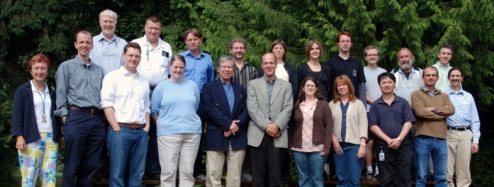
Highlighted in a feature article in “The Economist” magazine, the G-zero experiment is breaking new ground in physics. The G-zero experiment is looking for proof that “strange” quarks exist in protons. In the first half of the study, the experiment published evidence that “strange” quarks may in fact contribute to the magnetism of the proton. On July 24-25, 2008, about 25 experimenters from France, the USA, and Canada will gather in Vancouver to discuss the collected data and finalize the data analysis on the backward scattering angle results, which constitute the second half of this study, as the forward angle results have been published.
About the G-Zero experiment: The G-Zero experiment seeks to learn more about what happens inside the proton. Physicists believe that almost all the properties of the proton come from its “valence quarks” – two “up” quarks and a “down” quark. Nevertheless, it is possible that “strange” quarks could have some measurable effect. The G-zero experimenters are curious about the “strange” quarks.
In the experiment, a polarized electron beam is accelerated towards a liquid hydrogen target. Polarizing the beam means that the electrons spin in a certain direction (forward or backward) as dictated by the polarization state. Once the electrons hit the target, they scatter from protons in the hydrogen. The experimenters compare the scattering rate for electrons spinning clockwise to that for electrons spinning counter-clockwise. The difference may be affected slightly by the presence of “strange” quarks.
For more information, please visit the G-zero (G0) website.
By Nicole Dublanko
TRIUMF's Communications Assistant
